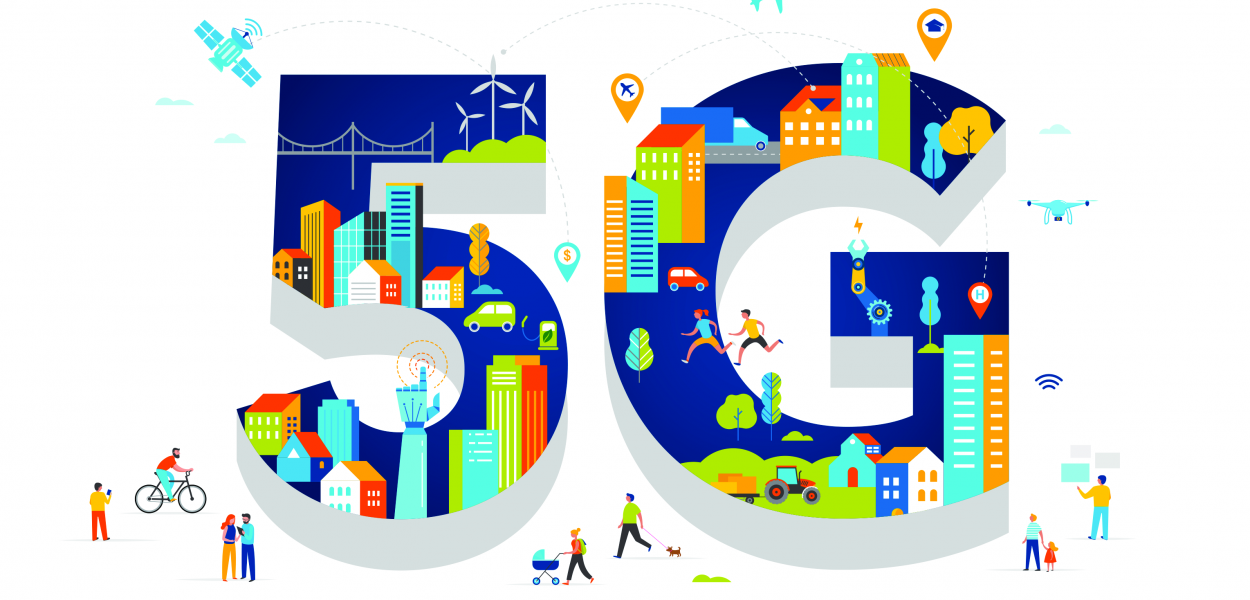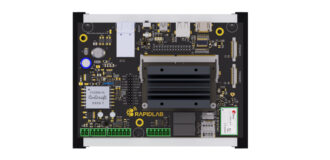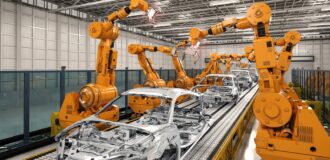19th March 2020

5G is stepping into industrial companies. The new communication standard transforms a traditional manufacturing company into a modern business. Bosch and BMW have already proven that the network can become a strategic part of an organization.
The ultra-fast fifth-generation network enables the collection and processing of huge volumes of data in real-time. The new mobile technology provides a more stable connection and much shorter response times than the solutions available so far. Most importantly, the 5G network focuses not only on digital communication between people but also on machine-to-machine connectivity among sensors, devices, and machines.
The International Telecommunication Union (ITU) has defined three fundamental pillars for 5G network: eMBB (enhanced Mobile Broadband) – high-speed broadband, mMTC (massive Machine Type Communications) – mass machine to machine communication for numerous applications of Internet of Things that allow 1 million devices to communicate per 1 km² and URLLC (Ultra-Reliable Low Latency Communications) – reliable transmission with low latency below 1 ms. This means that 5G delivers the performance that previous generations of networks couldn’t guarantee. By exploiting the full potential of the new mobile technology, we can completely change the way we have connected sensors, devices and machines so far.
Looking for the best network technology for your company?
New nervous system in the factory of the future
There is no industry 4.0 without a revolution in the way data is transmitted. Worcester Bosch became the first factory in the UK to test 5G wireless connectivity for sensor activation to improve production efficiency and logistics. How does the company benefit from the opportunities offered by the Internet of Things? The factory has sensors for predictive maintenance, so employees receive real-time feedback and use analytical data to prevent machine failures and reduce downtime. At the same time, it’s possible to improve the working conditions of operators – engineers can control all relevant safety aspects, check how equipment is operated and secured, and monitor whether the public network isn’t overloaded.
The fifth generation network is the game changer in the way we drive
The automotive industry leader aspires to become the first car manufacturer to offer 5G connectivity in a mass-produced model. The BMW iNEXT 2021 SUV was presented at the largest consumer electronics trade fair CES 2020, which was equipped with 5G Telematics Control Unit (TCU) technology provided by Samsung and Harman – development partners in the BMW Group creating innovations to meet the ever-changing needs of the rapidly growing automotive market. The new mobile technology has a wider range of applications in areas such as traffic data and navigation. The 5G network connects external networks to on-board electronic systems, providing real-time information about road conditions. TCU technology enables high-resolution map downloads, risk assessments, and blind-spot warnings to the driver. Also, the system allows drivers to connect a fully electric vehicle with other intelligent devices. By sharing traffic data and introducing vehicle connectivity to the new standard, we can increase the safety of road users worldwide.
On the way to industry 4.0
Relatively high latency is one of the main constraints of the current generation of networks. Robotised and automated production lines need a reliable, wireless infrastructure to enable efficient communication between operators and devices. Anticipating potential threats, being able to communicate with multiple devices at the same time, and reacting immediately to irregularities in production processes – these are just some of the improvements you can achieve with the new mobile communication standard. The fifth-generation network is free from sudden drops in performance caused by a large number of users using it at the same time, making it possible to launch autonomic vehicles that respond without delay to signals received from the environment.
Sources:
https://www.gov.pl/web/5g
https://www.bosch.co.uk/internet-of-things/leading-in-5g-technology/
https://www.bosch.com/stories/5g-industry-4-0/
https://www.bosch-presse.de/pressportal/de/en/bosch-applies-for-local-5g-licenses-203328.html
https://www.businessinsider.com/iot-connected-smart-cars
See also:
Let’s stay in touch
Tell us about your IoT project and we’ll get back to you shortly.
Talk to our expert

Paweł Skiba
IoT Solution Architect


